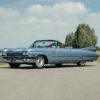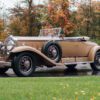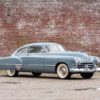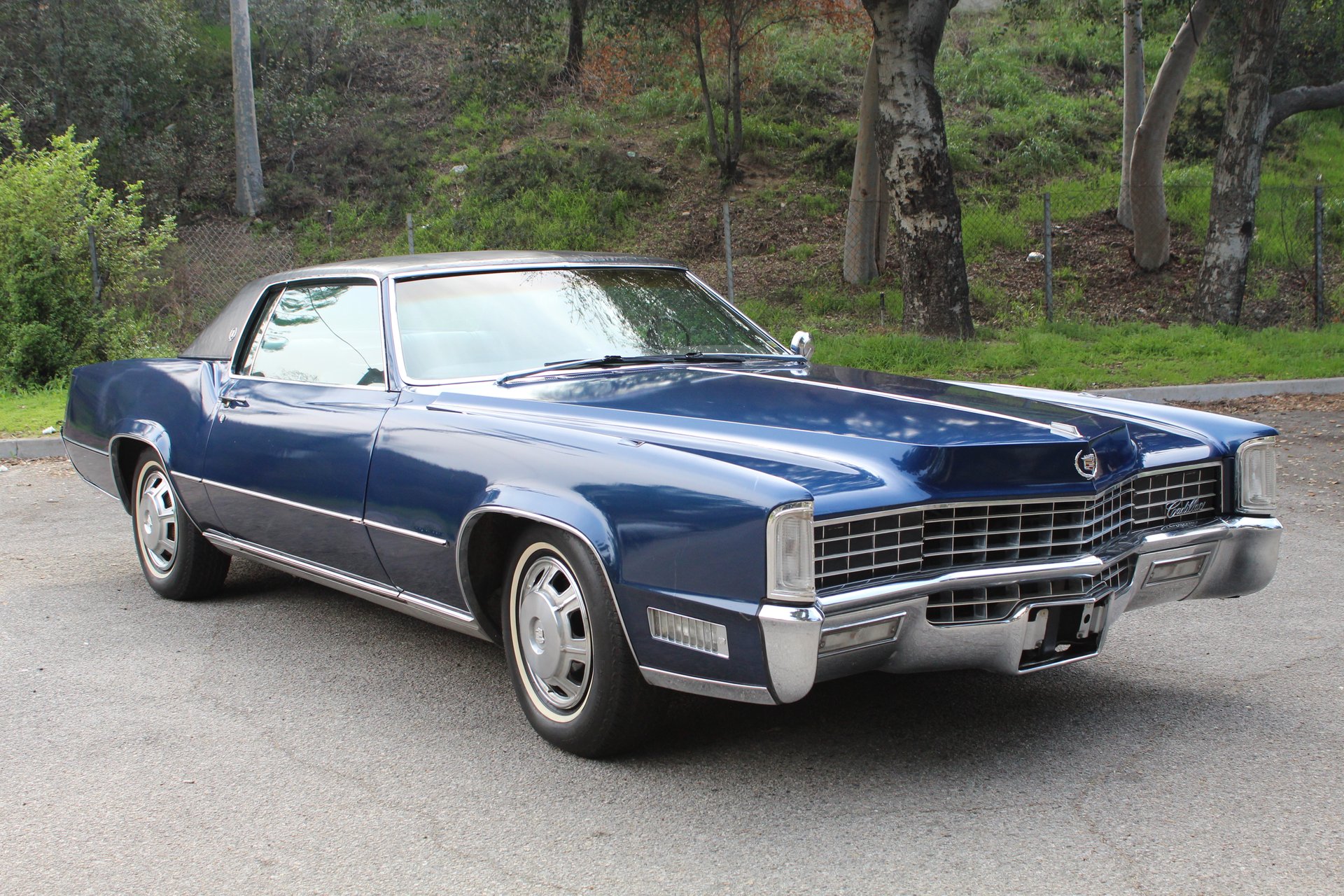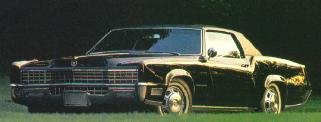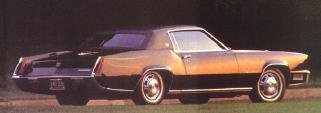Eldorado Cadillac Models & History 1967
Asit happened, Cadillac began experimenting with front drive during the Brougham years. But though a running chassis tested in late 1959 looked promising, fwd was still a relative novelty and by no means proven. Thus, when General Motors stylists began sketching a “new Brougham” that October, they devised shapes adaptable to either front or rear drive.
They worked on this experimental project, coded XP-727, through early 1962, when GM management approved front drive for a new “personal” Cadillac. The clincher was the successful engineering effort toward what would be GM’s first production front-driver, the 1966 Oldsmobile Toronado. Engineering for both models was more or less combined by summer 1963, in project XP-784, but Eldorado styling originated in two separate programs: XP-820, begun in September, and the evolutionary XP-825, begun in December. The latter was production—approved in May 1964, with shorter overhangs the major subsequent change. Unlike previous Eldorados, only a coupe was planned, with no evident thought of a convertible.
The new-generation Eldorado naturally inherited the Toronado’s novel “split” driveline. This comprised a three-speed Turbo Hydra-Matic transmission mounted longitudinally beside the engine and driven from the flywheel by a Morse “Hy-Vo” inverted-tooth chain. Basic suspension was also shared: front A-arms, longitudinal torsion bars, and anti-roll bar; at the rear, a drop-center beam axle on single-leaf springs and four shock absorbers, two vertical, two horizontal.
Beyond this were major differences. There was styling, of course: distinctly Cadillac, beautifully masterminded by GM design chief William L. Mitchell—and so different from both the Toro and the second-generation 1966 Buick Riviera that some observers wondered whether they all really used the same new GM E-body. An Eldorado could have only Cadillac power, so the division’s 7 Litre V-8, new for ’64, was modified for front drive with a new oil pan, exhaust manifolds, accessory drive, and engine mounts. Output was the same as for other ’67 Cadillacs: 340 horsepower and 480 pounds/feet torque with four-barrel carburetor and a 10.5:1 compression ratio. Steering was GM’s usual recirculating-ball mechanism, with variable-ratio power assistance. Standard front brakes were drums, but the optional power assisted four-piston radially vented front discs were a low-cost option: $105). At the back were duo-servo 279mm diameter drums. (The Toro started with drums, then switched to front discs for ’67.)
The Eldorado also differed in its 25mm-longer wheelbase—3048mm in all—and unique suspension tuning. The latter included standard rear leveling and narrower, softer-riding tires, though the Cadillac handled at least as well as the Olds. Indeed, the ’67 Eldorado was the closest thing to a “driver’s Cadillac” in years. Motor Trend found it could power through comers in utter safety. “The front tires will make a lot of noise, but the car will stick.” It could also go: 0-96.6 km/h in about 10 seconds, 0-129 km/h in 15.3, 201 km/h–209 km/h flat out. All this, plus “the traditional silence, comfort and luxury that buyers of this nameplate expect,” as MT observed.
That was more than enough to make the first front-drive Cadillac a first-year sellout. True, production was deliberately limited to about 10 percent of total division volume—though it ended up slightly short of that at 17,930—but this was only to ensure exclusivity as well as high quality. Abetting the latter was a special new one-shift Eldorado assembly line at Cadillac’s Clark Avenue home plant in central Detroit, one reason the Eldorado bowed a year behind Toronado. Other reasons included Cadillac’s desire to improve on Oldsmobile’s work—and that the Eldo have its own moment in “the white light of publicity.”
Publicity it earned, from reporters who suddenly seemed to forget all about the year-old Toronado. Maybe they were dazzled by the elegant lines, the wreath-and-crest heraldry, or the $6277 base price (about $1500 upstream of that year’s Toro). Whatever the cause, the newest member of the upper-crust Fleetwood family was almost universally praised. Automobile Quarterly gave the Eldorado its 1967 “Design and Engineering Excellence” award. Car Life declared it “beyond the scope of today’s luxury/specialty concept … the sort of visually distinctive, tastefully luxurious, enormously expensive, individualistic conveyance which characterized the Classic Era of automobile design.” Cadillac simply called its new Eldorado the “World’s finest personal car,” while touting its “Elegance in Action.”
The 1967 Cadillac Eldorado was a completely new front-wheel-drive six-passenger coupe. It was described as a “sports-styled” automobile and the first car to combine front-wheel-drive; variable ratio power steering and automatic level control. Built off the Oldsmobile Toronado platform, utilizing the same basic body shell, the Eldorado was shorter and lower than even the smallest Cadillacs, but could provide full six-passenger seating because of its drivetrain layout. The Cadillac V-8 was fitted to the platform with changes in the oil pan, exhaust manifolds, accessory and drive belt layout and motor mount system. It had dual exhausts, but a single outlet muffler and tailpipe arrangement. An improved fresh-air system eliminated the need for front ventipanes. The Eldorado shared 1967 Cadillac technical changes such as Mylar-backed circuitry; bigger power brake booster; slide-out fuse box; improved automatic headlamp dimmer and braided rayon brake hoses, but was the only model in the line to offer front disc brake option. The typical assortment of Fleetwood extra equipment was standard on Eldorados as well.
STYLE
| Model No. | Style No. | Body Type | Seat | Factory Price | Shipping Weight | Production Total |
|---|---|---|---|---|---|---|
| 67-393 | 69347-H | 6 | $6277 | 2086 kg | 17,930 |
ENGINE
| Type | V-8 Overhead valves |
| Block | Cast iron block |
| Displacement | 7 Liter |
| Bore and stroke | 104.9mm x 101.6mm |
| Compression ratio | 10.5:1 |
| Brake horsepower | 340 hp @ 4600 rpm |
| Power | 255 kW @ 4600 rpm |
| Bearings | Five main bearings |
| Valve Lifters | Hydraulic valve lifters |
| Carburetor | Rochester four-barrel type, model 7026030 |
CHASSIS
| Wheelbase | 3048mm |
| Overall Length | 5613mm |
| Rear axle ratio | 2.94:1 |
| Transmission | three-speed Turbo-Hydramatic |
| Tires | 9.00 x 15 |
| Front Tread | 1613mm |
| Rear Tread | 1600mm |
POWER TRAIN OPTIONS
CONVENIENCE OPTIONS
HISTORICAL NOTES
- Dealer introduction date for 1967 Cadillacs and Eldorados was October 6, 1966.
- The Eldorado featured concealed, horizontally mounted headlamps.
- A new assembly line was setup at the Detroit factory to build Eldorados.
- A third successive year of record production and sales was marked by Cadillac Division in 1967.
- Based on the Eldorado’s popularity, Cadillac sales for a single month passed the 20,000 unit level for the first time in the company’s history, setting an all-time high of 22,072 cars in October, 1966.
- A year later, 23,408 cars conforming to 1968 specifications were built in October, 1967.
- Calvin J. Werner was general manager of Cadillac; Fred T. Hopkins general sales manager; C.A. Rasmussen chief engineer and W.J. Knight public relations director.


